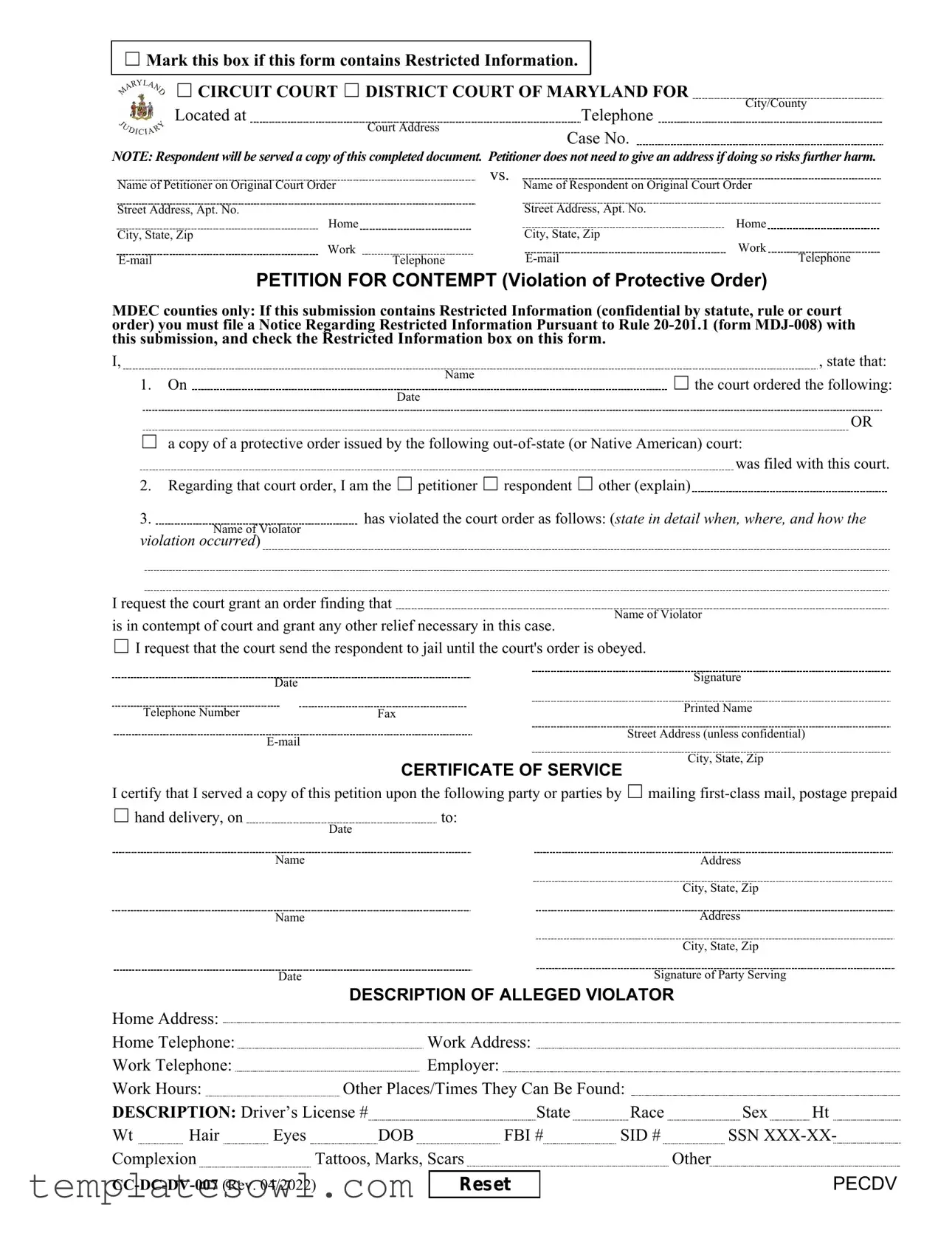Filling out the Maryland Petition for Contempt form can be a daunting task. One common mistake occurs when individuals fail to specify the name of the violator. It is important to ensure that the violator's name is clearly stated, as this directly impacts the court's ability to respond to the petition. Omitting or misspelling this name could cause delays or even dismissals, which can be frustrating for anyone seeking relief.
Another frequent error is neglecting to provide detailed information about the violation. The form requests a thorough account of when, where, and how the violation happened. Vague descriptions can leave the court confused and unprepared to take action. Including specific dates, times, and contexts not only strengthens the case but also shows the court the seriousness of the situation.
Some individuals mistakenly leave out their contact information, believing it unnecessary. However, the petition requires a telephone number, email, and address unless confidentiality is an issue. Providing this information is essential for communication purposes, enabling the court to reach you for any follow-up or clarification. Missing contact details can lead to complications or miscommunications down the line.
Additionally, individuals sometimes do not check the correct boxes regarding their role in the case. It's crucial to identify yourself as the petitioner, respondent, or other party correctly. Mislabeling can confuse the court about your involvement and responsibilities related to the case. Review this section carefully to avoid any misunderstandings.
Failing to serve the petition correctly is another mistake that people make. After completing the form, it must be properly filed and served to the involved parties. Many forget to document this step accurately within the Certificate of Service section. Ensure that the method of service and the date are provided; without this, the petition may be considered improperly filed, jeopardizing its acceptance.
When filling out the form, it’s vital not to overlook the requirement for information about the violation's circumstances, such as times and places where the violations occurred. Some individuals may provide information without being specific, which can downplay the seriousness of the offense. Being precise in your descriptions can help convey the urgency and gravity of the issues at hand.
Lastly, many people forget to sign the petition. Even if every detail is perfect, an unsigned document is not valid. This error can be easily overlooked amidst the stress of filing, but it is crucial to ensure that your signature is present, confirming your acknowledgment and understanding of the petition's contents.

